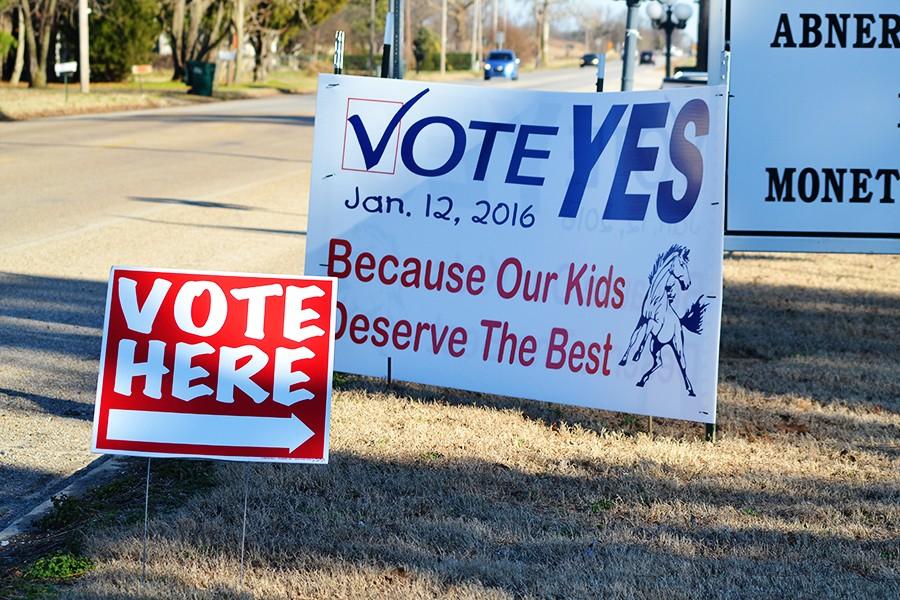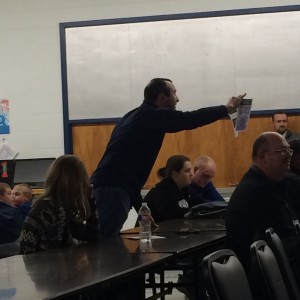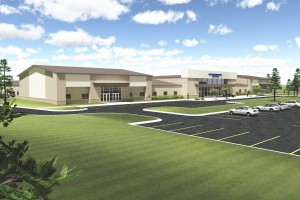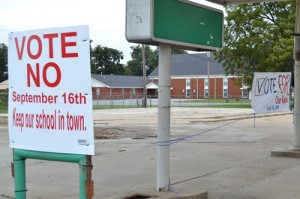Taylor responds to millage outcome
BIC patrons voted Tuesday to approve the seven mill increase for construction of new schools in both Monette and Leachville.
January 14, 2016
Hoof Prints editor Camden Metheny sat down with superintendent Gaylon Taylor to get his views on Tuesday’s millage vote. The proposed seven mill increase passed with a vote of 669-434.
Camden Metheny: How do you feel about the millage raise passing, considering it’s failed the last two years?
Gaylon Taylor: I am almost at a loss for words. This is an electrifying feeling, the fact that for the two and a half years that there hasn’t been a day that hasn’t gone by that I’ve not had the school millage, the school’s future, somehow on my mind. It was something I couldn’t escape. I mean, I’d go home and have to think “What could I do? What did I do? What could I do better?”
It was such a critical decision for our community because this is not an opportunity that comes around often. I mean, when there was $11 million for us to take advantage of, and we had to pass a millage to get that, and we already had two strikes against us, one more strike and that was going to be one of the most dreadful days of my life for the board to make a decision to turn that money back, and that’s what we were going to have to do.
But at the same time, when I say I’m at a loss for words and full of excitement, I’m just overwhelmed at the outcome. We’ve basically reversed the outcome of the first election. That’s powerful because that’s the type of message that this vote needed to send. This is the first time in the school’s history that we’ve had all three communities come together and vote on something that will have an impact on future generations of education. They came together and spoke loud and clear that we are proud of this community and that we want to preserve it for future generations. We’ve always been so proud of the education that we’ve been able to provide and at one point in time, our facilities were not terrible. They weren’t great, but they weren’t terrible.
When we first consolidated, that building over there (high school) was pretty nice because it was the best we’ve had. Just through the course of time, we’ve failed to really be able to address these issues because they’ve been so complicated, and people don’t seem to understand that when you have three communities that have invested interest in it and to get them to come together and say “This is what we think is best for our children’s future,” that was pretty powerful.
When the buildings are built, it’ll be the first time that there’ll be no Leachville, no Monette, no Black Oak. It’ll be Buffalo Island Central Elementary and Buffalo Island Central Junior High/Senior High, and that’s so important. Even though kids that go through our system, I don’t think they feel any division. But I think this will help enhance that because they’ll feel like they’ll be a part of something. Us putting the earlier grades together, I think that’s helped, and this will only help the situation even more. At the same time, this is helping give a boost to the economy in Leachville and Monette. When you bring in construction projects that are over $8 million into each community, those don’t come along every day.
CM: What are some short term and long term effects that you expect to come out of this?
GT: Short term effects, I will probably ask our faculties to hold off on spendings, since we want to conserve as much as we can and put it into the building project. Now, we’re not going to let education suffer. Long term, the ability to be able to move our kids into those new buildings and with the new technology, it’s going to be worth it. It’s going to be worth all the fights, and the hassles, and all the public meetings the communities have gone through and the criticisms I’ve gone through. That’s been the hardest thing. People take things too personally, and it’s hard sometimes to stand up to that. But my stance from the beginning has always been “If it’s for the kids, I’ll do anything.”
CM: What will this do for the student population?
GT: I think it’ll hold steady while we’re in this process. As the steel mills continue to open up, people will look at the academics we offer and the outcomes of the academics, and if people can find a place to buy, they’re going to buy here. We’re going to see some growth from this. If it had failed, I think we would’ve been in trouble. When you look to the left, you’ve got Riverside with new facilities. When you look to the right, you’ve got Manila with new facilities. They’re not going to land here. Those are the things I see happening. We’re not looking to see us growing 30 students a year. If that were to occur, we’d run out of space. If we could keep growing about five to six students a year, that’d be a nice growth for us.







Gaylon Taylor • Jan 15, 2016 at 1:53 pm
I hope to be able to answer that question after i meet with the architect and construction manager on January 19. My hope is that we are able to develop a timeline that can be shared with all communities.
Tina Russell • Jan 14, 2016 at 12:16 pm
Just wondering when the construction will begin?